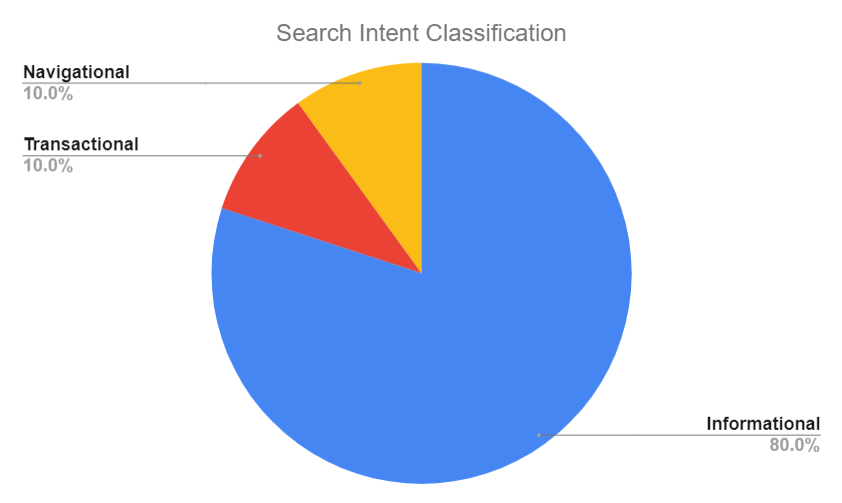79tka Insights
Your go-to source for the latest news and information.
Search Intent: What Your Queries Really Mean
Uncover the true meaning behind your search queries and skyrocket your SEO game! Discover search intent secrets today!
Understanding Search Intent: Unpacking User Queries
When it comes to SEO, understanding search intent is crucial for creating content that resonates with users. Search intent refers to the motivation behind a user's query and can be categorized into four primary types: informational, navigational, transactional, and commercial investigation. By effectively unpacking user queries, content creators can tailor their articles, blog posts, and web pages to meet the specific needs of their audience. For instance, a user searching for 'how to bake a cake' exhibits informational intent, seeking guidance and tips, whereas someone searching for 'buy cake mix online' demonstrates transactional intent, indicating a desire to make a purchase.
To further optimize content for search intent, it's important to conduct keyword research that reflects the various intents behind user queries. This can be achieved by using tools that analyze search volume and user behavior. Incorporating related keywords and phrases within your content not only helps improve your visibility on search engines but also ensures you address the various questions and needs of your audience. By focusing on search intent, you can create a more satisfying user experience, ultimately leading to higher engagement and better rankings in search results.

The Different Types of Search Intent and Their Importance
Understanding the different types of search intent is crucial for creating content that resonates with your audience. Search intent generally falls into four main categories: informational, navigational, commercial, and transactional. Informational intent refers to users seeking knowledge or answers to their questions, such as 'How to improve SEO?' Navigational intent is when users are looking for a specific website or page, like 'Facebook login.' Commercial intent suggests that users are in the research phase before making a purchase, as seen with queries like 'best smartphones 2023.' Lastly, transactional intent is when users are ready to make a purchase, evident in searches like 'buy running shoes online.'
Recognizing and catering to these various search intents can significantly enhance your SEO strategy. By aligning your content with the specific needs of users, you increase the likelihood of engaging them effectively. For instance, creating detailed articles for informational intent can capture traffic from users looking for insights, while optimized product pages can cater to those with transactional intent. In conclusion, understanding and matching your content with different types of search intent is essential for driving traffic and improving your overall online presence.
How to Optimize Your Content for Various Search Intentions
Understanding and optimizing your content for different types of search intentions is crucial for effective SEO. Search intent generally falls into four main categories: informational, navigational, transactional, and commercial investigation. To cater to informational intent, focus on providing valuable content that answers common questions or provides thorough explanations on a topic. For navigational intent, ensure that users can easily find your brand or specific product pages by optimizing site structure and navigation. When targeting transactional intent, make the purchasing process straightforward and highlight key product features, while for commercial investigation, compare offerings and provide detailed reviews to help users make informed decisions.
To effectively optimize your content for these different search intentions, consider implementing the following strategies:
- Keyword Research: Use tools to identify relevant keywords that align with each intent type.
- Content Structuring: Format your content with headings and bullet points to improve readability and direct users to the information they seek.
- Engagement Factors: Utilize multimedia elements like images, videos, and infographics to enhance user engagement and retention.
- Call-to-Actions: Incorporate clear and enticing calls-to-action that correspond to the search intent, guiding users towards the next step.